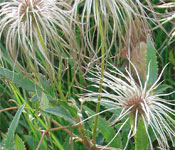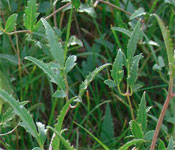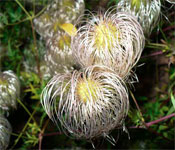Family – Buttercup family
Life Cycle – perennial
Habitat – tolerant of cold, drought, nutrient-poor soils, and part shade, but prefers full sun, can be found thriving in open woodland, grassy areas and even gravelly areas.
Stems
Several stems per plant, growing up to 3-4 m long. Young stems are green while the older stems are tough and woody.
Leaves
Leaves are bright green and compound with 5-7 lance-shaped leaflets 5-6 cm long, which may be lobed. Leaf tips are pointed and leaf edges are coarsely toothed. Leaves may be slightly hairy on the underside and are deciduous.
Flowers
Flowers are lemon-yellow, nodding, with four petals, and appear mid-summer through late fall. Flowers are bell-shaped at first and then flatten as the petals spread. Petals may be silky-hairy on the outside and occasionally tinged purplish-brown. Flowers are borne at the ends of stems or in leaf axils – usually solitary but sometimes 2 or 3 together – on a short flower stem. Bracts are similar to the leaves but smaller.
Seed
Seeds are oval with silky tails about 5-6 cm long.
Prevention
Yellow clematis is distributed mainly through the nursery trade, and then spreads far beyond the hardens and flowerbeds via its abundant, wind dispersed seed.
 |
 |
 |
